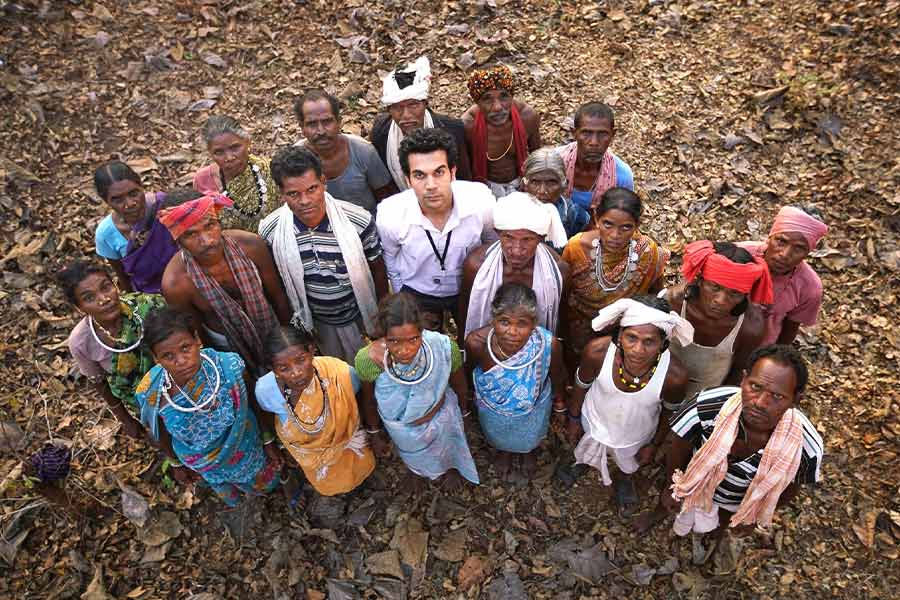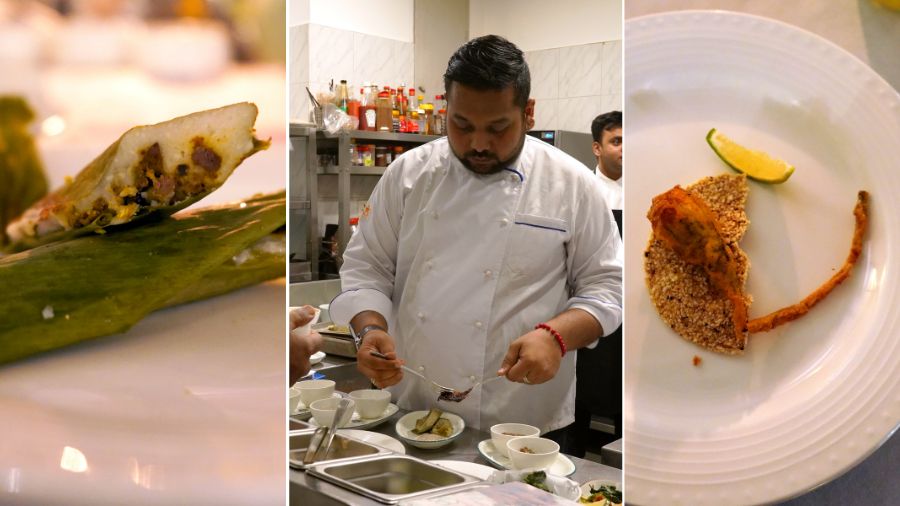In the heart of Odisha’s Mayurbhanj district, where time-honoured traditions meet culinary innovation, indigenous tribal communities have safeguarded a culinary secret for centuries. An intrinsic part of their diet, red weaver ants, meticulously incorporated into various dishes, have given rise to an extraordinary gastronomic creation – the Similipal Kai Chutney. This spicy delicacy recently earned a Geographical Indication (GI) tag on January 2, affirming its place as an indigenous speciality.
Behind this recognition lies the effort of The Mayurbhanj Kai Society Ltd, which, in 2020, applied for the GI tag. Due to this, the Similipal Kai Chutney now gains even more recognition as a cultural hallmark of the region, tracing its roots to the lush forests of the Mayurbhanj district.
My Kolkata scurries into the origin of the red ant chutney and speaks to those who have a close association with it.
Nature’s buffet
The red weaver ants are locally called kai pimpudi, and are blended with aromatic spices to create the chutney – mirroring the rich biodiversity of the district’s landscapes. These weaver ants are so called for their elaborate nest-weaving abilities and crafting nests that are resilient to wind and water.
A recent scientific analysis by the Odisha University of Agriculture & Technology in Bhubaneswar reveals that the ants are a nutritional powerhouse – boasting proteins, calcium, vitamin B-12, iron, magnesium, zinc, potassium, sodium, and copper.

The Bollywood film ‘Newton’ offers a glimpse into tribal culture. Rajkummar Rao’s character samples raw ants offered by his tribal colleague Malko (Anjali Patil)
Ant harvesting and making the chutney
Gathering the insects from the trees in nearby forests is no small feat. Each nest is surrounded by a protective ring of male ants, fiercely guarding the egg-laying females. The task requires careful navigation, as any indication of danger prompts an immediate attack from the males. Despite the painful bites, the harvesters of the tribes in Mayurbhanj persevere, skillfully collecting the males, adding them to their bags, and then proceeding to harvest the females and their eggs.

Red Ant Chutney prepared by Odisha chef Rachit Kirteeman at a pop-up by Gormei in August 2023
To begin the making process, the harvesters crush and dry all the ants and eggs, followed by grinding them with a mortar and pestle. The concoction is then enriched with a blend of tomatoes, coriander, garlic, ginger, chilli, salt, and a touch of sugar, resulting in a velvety, orange paste.
A tribal sports advantage

The chutney is a rich source of protein for tribal athletes in Orissa – some of whom consider it a superfood Future Star Sports Academy/Facebook
For rugby athlete Dibyaranjan Das from Mayunbhanj, Odisha, red ant chutney is a regular part of his meals. The nutritional value helps him and other athletes as the chutney is a superfood.
“Red ant chutney is something we actively eat for lunch and dinner. We pair it with rice water or Pokhara and consume it,” said Das, the founder of Future Star Sports Academy, a non-profit organisation that teaches children from different tribes sports like football and rugby.
“Football is quite popular in the region. We currently have 30 students in the academy where we provide free staying, lessons and meals. Currently, two of our students are playing international rugby,” he said.
When asked about the ant chutney, Das said, “Some of the local people do not have enough access to protein-rich vegetables. So, you will see them and the tribes eating it with rice. It is a common practice,” he said. During the cold season, Das really enjoys the chutney. He either gets the ants from the forests or buys them from tribes and local markets. Some of the tribes that the athlete has bought from are Santhal and Munda.
An indigenous community lifestyle

Mati Farms aims to make locally grown vegetables more profitable for the farmers of Odisha. While they don’t farm red ants, they organise tours showcasing the process of harvesting and storing red ants in indigenous communities
But it is not only in Mayurbhanj where the red ant chutney is enjoyed. Sanjog Sahu, the founder of Mati Farms, shares insights on working with indigenous communities in Odisha and Chhattisgarh. According to Sahu, who is an ecologist, red ants are integral to the forest life of indigenous communities not only in Odisha but throughout India, with various tribes sharing similar practices. The Gonds of Bastar and the Santhals of Odisha and Purulia harvest the same species, adapting different culinary preparations.
While they don’t farm red ants at Mati Farms, Sahu says that they’ve received several inquiries about it. “Recently, we organised tours for buyers (who are sometimes chefs), showcasing the foraging of red ants, which is a part of our tours, in indigenous communities. Chefs from The Bombay Canteen and bulk buyers from Delhi have currently reached out to us as well in regards to acquiring red ants for their menu,” shared Sahu.
Sahu emphasises that the geographical overlap of tribes in northern Odisha, Jharkhand, and Bengal contributes to the abundance of red ants in those areas. He highlighted that these tribes, such as the Gonds and Santhals, are not the only ones practising foraging and consuming red ants. Other minority tribes in the districts share similar culinary traditions.
Served with pride

The dining room of The Belgadia Palace, where too, they serve their own Red Ant Chutney made authentically The Belgadia Palace
While the harvesting, foraging and cooking techniques for red ant chutney remain indigenous, it does not mean properties and resorts in Mayurbhanj shy away from making their own. And no, they do not bend any rules. Sautam Pramanik, the palace general manager of The Belgadia Palace, mentioned that they too serve their own Red Ant Chutney made authentically. How, you ask? “Our property has its trees and we have enlisted a member of a local tribe to collect the ants from the trees. Then, our chef, also from a tribe, prepares the chutney the traditional way,” he says.












